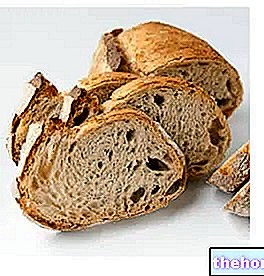Acid Milks and Acid-alcoholic Milks
Fermented milks and yoghurt are considered "SPECIAL MILK PREPARATIONS" (Royal Decree of 1929). All those products obtained by coagulation, without subtraction of the serum, by the exclusive action of characteristic microorganisms, which must remain alive and vital until the moment of consumption, fall into the category.

Fermented milks differ in:
ACID MILK: yogurt, leben, gioddu ("homolactic" acid fermentation).
ACID-ALCOHOLIC MILK: Kefir, Koumis (acidic and alcoholic fermentation, called "heterolactic").
The two product categories differ on the basis of the microbial strains used; in the first case the bacteria carry out a simple fermentation of lactose with the production of lactic acid (homolactic); in the acid-alcoholic milks, on the other hand, fermentation gives rise to lactic acid and ethyl alcohol.
Among the sour milks, gioddu is a typical Sardinian product, a kind of yogurt made with sheep's or goat's milk; leben, on the other hand, is a traditional food of the Muslim countries overlooking the Mediterranean, where fermentation takes place inside skins obtained from the stomach of kids or lambs.
Among the acid-alcoholic milks, kefir and koumis are mostly fermented and foamy milky drinks. Kefir is obtained from: torula yeast (alcoholic fermentation), Lactobacillus brevis, L. casei, Leuconostac mesenteroides and Saccharomyces cerevisiae, while Koumis is obtained from milk fermented with a pure culture of Kumiss.
The Yogurt
Of all fermented milks, yogurt is the most consumed food in our country; it is produced by exploiting the action of two microbial strains - the Lactobacillus bulgaricus and it Streptococcus thermophilus - in specific ratios, which can be 1/1 - and in this case a more acidic yogurt is obtained - or 1/2, obtaining more velvety products. In fact, Lactobacillus bulgaricus has a greater fermentative aptitude and as such determines a lower pH level.
The raw material for the production of yogurt is obviously milk, which can be skimmed, partially skimmed, or whole. After undergoing a heat treatment, the homolactic fermentation leads to the formation of lactic acid and a series of intermediate products (acetylmethylcarbinol, diacetyl, acetaldehyde, organic acids) which give the typical aroma of this food product. L. bulgaricus, for its part, it produces viscous substances that give a velvety texture to yogurt.
The preparation process depends on the type of yogurt you want to make. The initial phases are however somewhat identical for all products; the preparation of milk, in particular, involves a standardization, therefore a normalization of its lipid and dry residue content (for a whole yogurt, for example, the lipid content must be "be higher than 3%; more generally, the industrial product must always have the same composition even if starting from milks with a different composition; therefore, a skimming or" addition of cream will be carried out, to correct the lipid content, or an "addition of powdered milk to increase the amount of proteins and sugars). Everything must naturally be homogenized and subjected to heat treatment, which is carried out in more drastic conditions than the pasteurization of the milk (either the temperature is increased or the heat exposure times are lengthened); the heat has in fact the purpose of denaturing the proteins - facilitating the formulation of the clot - and to kill all the microorganisms present. After the heat treatment, the functional microbial strains are inoculated, which are precisely the Lactobacillus bulgaricus and it Streptococcus thermophilus.
Second part "




























